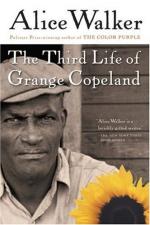|
This section contains 239 words (approx. 1 page at 300 words per page) |

|
In refuting stereotypical portraits of black men and women, The Third Life falls into the literary tradition of AfricanAmerican novels that focus on racial oppression. Two prominent examples are Zora Neale Hurston's Their Eyes Were Watching God (1937; see separate entry) and Ann Petry's The Street (1946; see separate entry). These novelists, like Alice Walker, created black female characters who are complex and dynamic in contrast to one-dimensional black women, such as the loyal mammy, the loose woman, and the tragic mulatta, who frequently appeared in literature written by both white and African-American authors before the 1940s.
Specific parts of The Third Life resemble earlier African-American novels. Grange's period in the North, beginning in 1926 and lasting nearly four years, has echoes of Ralph Ellison's opening chapter of InvisibleMan (1951; see separate entry), for Grange finds that "to the people he meet and passed daily he was not even in...
|
This section contains 239 words (approx. 1 page at 300 words per page) |

|




